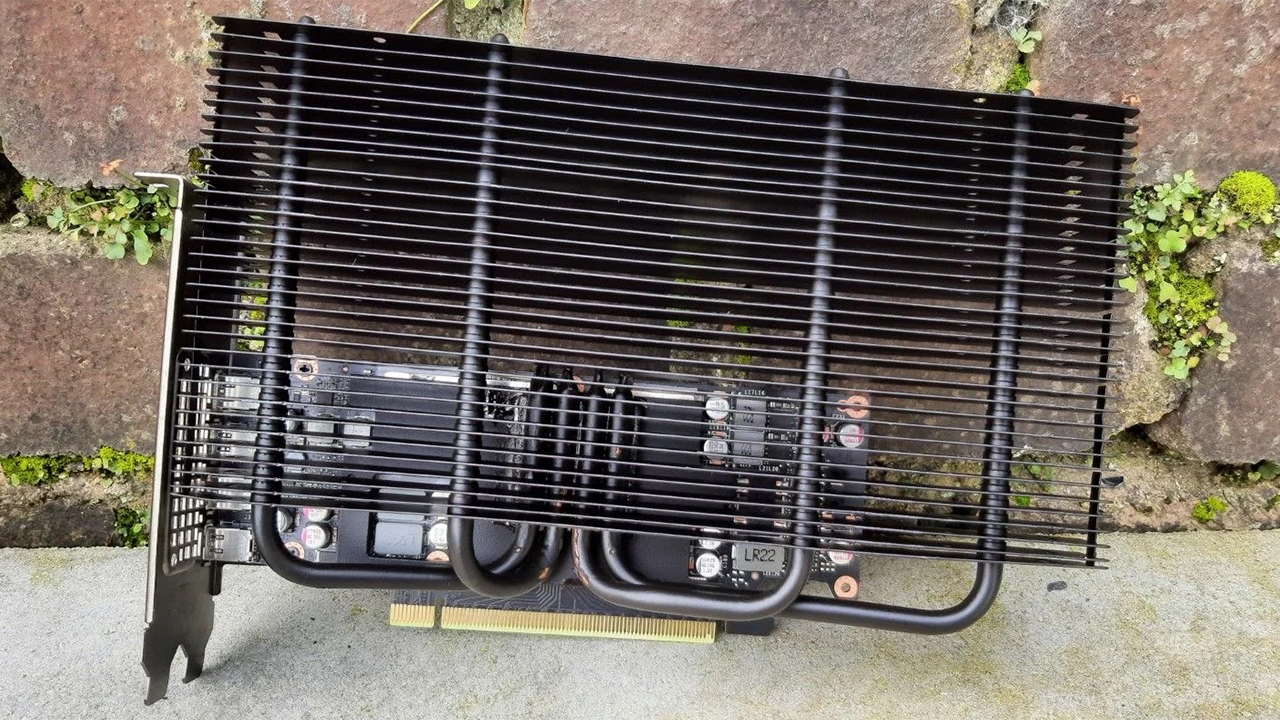
Fanless graphics cards are not commonly seen these days as most GPUs tend to get quite hot and require active coolers with two or three fans. Even relatively energy-efficient mainstream. However, an enthusiast took matters into their own hands and built a passively cooled graphics board with a contemporary GPU powered by Nvidia’s Ampere architecture, but cooled by a 15-year old Arctic cooler. They shared the experience at SFF.Network.
In a bid to build his passively cooled graphics card, RevocCases took Nvidia's professional-grade RTX A2000 graphics card based on the GA106 GPU with 3,328 CUDA cores (at up to 1.20 GHz) and a 192-bit memory interface. The card comes with 6GB of memory and is rated for a 70W power consumption, meaning that it does not need an auxiliary PCIe power connector. 70W is of course not much, so the board can indeed be cooled passively with a proper cooler.
That 'proper' cooler is Arctic's Accelero S1 Rev. 2 that was designed for AMD's Radeon HD 3850/3870 and Nvidia's GeForce 8800 GT/8800 GTS from 2008 – 2009. The product can be bought from specialists like CoolerGuys or from Ebay and it is not that expensive. The passive cooler seems to be compatible with Nvidia's RTX A2000 graphics card, though the modder decided to attach a copper plate to the cooler to cool down GDDR6 memory too.


Nvidia's GeForce RTX A2000 graphics card is designed for compact workstations, so this one is not exactly cheap at all. It can be obtained for $356 at Amazon, though it is possible to get it cheaper at Ebay.
It should be noted that Nvidia's RTX A2000 board offers performance akin to that of the GeForce RTX 3060, which is not exactly what demanding gamers might want. Meanwhile, Nvidia recently launched its RTX 4000 SFF Ada Generation board which offers GeForce RTX 3070 (one of the best graphics cards) level performance and carries 24GB of memory. the RTX 4000 SFF consumes only 70W of power and can also be cooled passively, but it has an MSRP of $1,250, which is not cheap.
Unfortunately, to build a passively-cooled graphics card these days, one will need a professional board or to downclock a consumer one. But while it is technically possible to reduce GPU and memory clocks, compatibility with the Accelero S1 Rev. 2 cooling system is not guaranteed as graphics cards are architected for different coolers. That said, it looks like professional graphics cards for compact workstations may be viable options for building fanless graphics cards.







